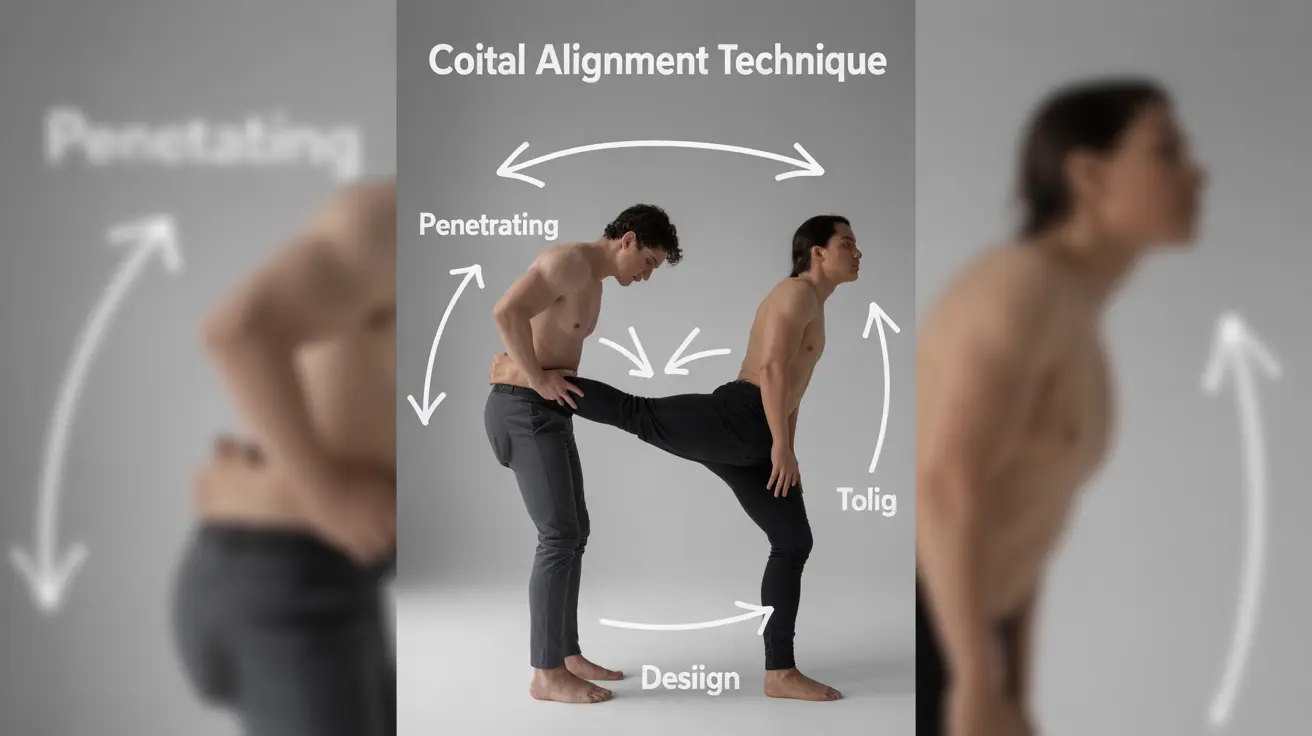The coital alignment technique (CAT) represents a significant advancement in sexual positioning, designed to enhance pleasure and intimacy between partners. This modified approach to traditional intimate positions focuses on maximizing clitoral stimulation while maintaining deep emotional connection during sexual activity.
Understanding and mastering this technique can lead to more satisfying sexual experiences for both partners, particularly for individuals who may have difficulty achieving orgasm through traditional methods. Let's explore the essential aspects of this intimate practice and how it can benefit your relationship.
Understanding the Coital Alignment Technique
The coital alignment technique is a thoughtfully designed variation of the missionary position that emphasizes sustained clitoral contact throughout intimate movement. Unlike traditional positioning, CAT involves specific body alignment and movement patterns that create consistent stimulation of sensitive areas.
This technique was developed by sex researchers to address common challenges in achieving mutual satisfaction during intimate encounters. It's particularly beneficial for couples seeking to enhance their physical connection while maintaining eye contact and emotional intimacy.
Key Elements of Proper Alignment
The success of the coital alignment technique relies heavily on proper positioning and movement. The penetrating partner positions themselves higher up on their partner's body than in traditional missionary position, with their chest aligned with their partner's shoulders. This creates the optimal angle for stimulation and movement.
Body Positioning
- Base position starts similar to missionary
- Upper body shifts higher on receiving partner
- Pelvis alignment is crucial for proper stimulation
- Weight supported on elbows or forearms
Movement Patterns
- Gentle rocking motion rather than traditional thrusting
- Synchronized movement between both partners
- Focus on maintaining consistent contact
- Steady, rhythmic pace
Benefits of the Coital Alignment Technique
The coital alignment technique offers several advantages over traditional intimate positions:
- Enhanced clitoral stimulation throughout the entire experience
- Increased likelihood of mutual satisfaction
- Better control over timing and pacing
- Deeper emotional connection through maintained eye contact
- Reduced physical strain on both partners
Learning and Practice Tips
Mastering the coital alignment technique requires patience and practice. Partners should focus on clear communication and gradual progression rather than rushing to perfect the technique immediately. Start with short practice sessions and gradually increase duration as comfort and coordination improve.
Communication Guidelines
- Discuss comfort levels openly
- Provide feedback about positioning
- Express preferences for pace and pressure
- Maintain ongoing dialogue about what works best
Frequently Asked Questions
What is the coital alignment technique and how does it differ from the traditional missionary position?
The coital alignment technique differs from traditional missionary position primarily through its higher positioning of the penetrating partner and focus on rhythmic rocking rather than thrusting. This alignment creates consistent clitoral stimulation throughout the encounter, unlike the traditional missionary position.
How does the coital alignment technique help increase clitoral stimulation and improve orgasm chances?
The technique creates direct and constant clitoral stimulation through specific body positioning and movement patterns. The rocking motion maintains consistent contact with sensitive areas, potentially increasing the likelihood of orgasm compared to traditional positions.
Can the coital alignment technique help with sexual difficulties like premature ejaculation or anorgasmia?
Yes, the coital alignment technique can help address various sexual challenges. The controlled movements and focused stimulation can help manage premature ejaculation, while the enhanced clitoral contact may benefit those who experience difficulty achieving orgasm.
What are the key steps and tips to practicing the coital alignment technique successfully?
Success with CAT requires proper positioning, synchronized movement, and patient practice. Start with correct alignment, maintain gentle rocking motions, and focus on consistent contact rather than rapid movement. Regular practice and open communication are essential.
Why is communication important for couples trying the coital alignment technique for the first time?
Communication ensures both partners understand the technique, feel comfortable with the positioning, and can provide feedback about what works best for them. It helps prevent misunderstandings, reduces anxiety, and increases the likelihood of successful implementation.




